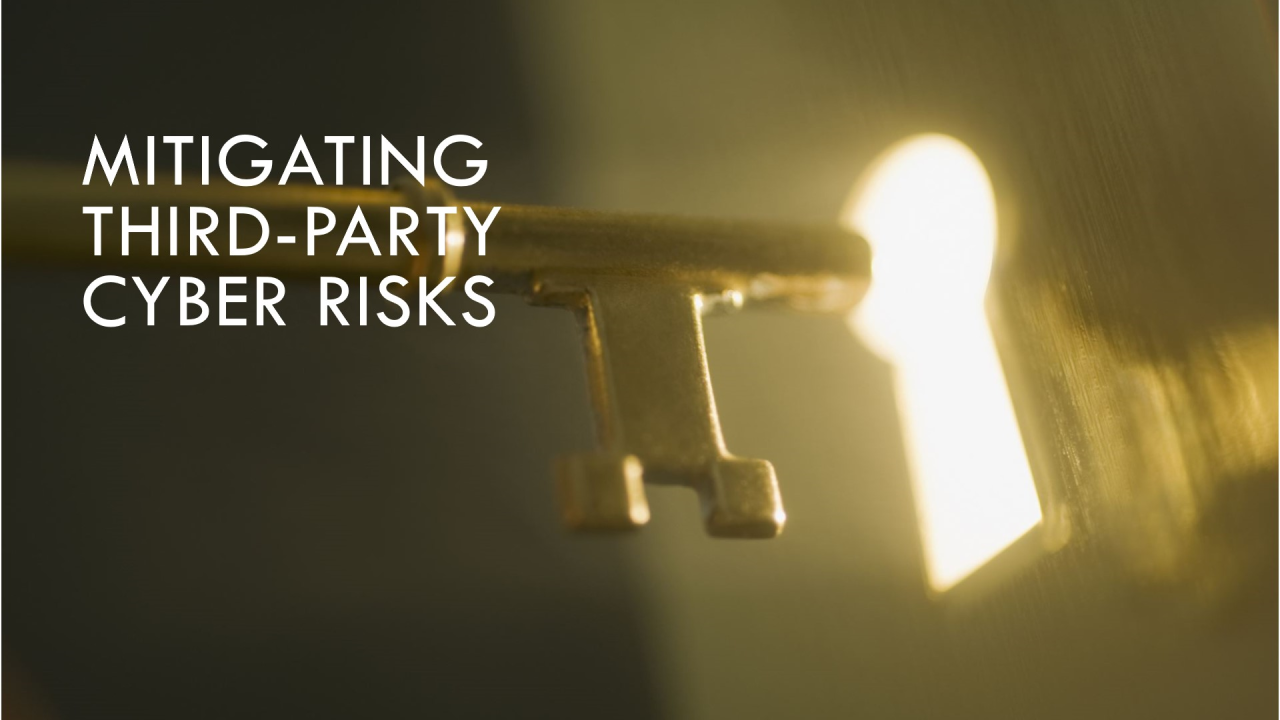
October 28, 2025
Mitigating Third-Party Risks: Enhancing Security Protocols for Vendor and Supply Chain Management
Mitigating Third-Party Risks: Enhancing Security Protocols for Vendor and Supply Chain Management
Have you considered how much you trust your employers? Suppose one of them gets hacked and your sensitive data gets leaked. A scary thought? This is how third-party risks affect many organisations today. As more vendors, contractors, and suppliers access your networks, security is more vital than ever. This blog will discuss how to improve security and reduce third-party vendor and supply chain risks to secure your organisation.
What are Third-Party Risks?
What are third-party risks? The hazards of working with vendors, contractors, and suppliers are often neglected. From your cloud storage provider to your email marketing organisation, third parties might affect your operations.
Businesses need these alliances, but hackers prefer to exploit their flaws. Imagine a vendor's system being breached, giving attackers access to your network. It seems like a cybersecurity thriller, yet it happens more regularly than you think.
As firms become more interconnected, risk management is essential. Supply chain security breaches can cost money, reputation, and legal difficulties. Knowledge on how to assess and manage vendors' security is crucial to defending your organisation.
Why Third-Party Risks Are Increasing
Why is this more important now? As firms become more digitally connected, exposure risks rise. Cloud computing, remote work, and outsourcing drive this transition. More third-party access to your systems increases vulnerability.
Worse, hackers are now targeting third-party vendors, the weakest link. Vendor data breaches can easily become your concern. Given that, protecting your vendors is no longer an option; it's a must.
How to Mitigate Third-Party Risks
How do we directly address these risks? Risk assessment comes first. Check your vendors' security regularly. Go beyond verifying their website for HTTPS to assess their security.
Another important stage is third-party audits. Verify vendors' security measures and routinely test their systems for flaws. A well-drafted contract should include security requirements like GDPR or CCPA compliance and what happens if they don't.
Add some useful coding to monitor vendor security. To check your vendor's website for SSL certification and security headers, you can write a simple Python script.
import requests
def check_ssl_security(url):
response = requests.get(url)
# Check if the site has SSL and appropriate headers
if response.status_code == 200:
ssl_check = "SSL/TLS Security: Passed" if "https://" in url else "No SSL/TLS Security"
security_headers = "Security Headers: " + str(response.headers)
return ssl_check, security_headers
else:
return "Error: Could not verify site."
# Example usage
vendor_url = "https://example-vendor.com"
ssl_security, headers = check_ssl_security(vendor_url)
print(ssl_security)
print(headers)This basic check can be part of your automatic vendor monitoring to assure security.
Best Practices for Supply Chain and Vendor Security
After assessing risks, let's examine security best practices:
- Vendor Segmentation: Treat them differently. Consider their data access and business importance when segmenting them. High-risk vendors require greater security.
- Access Control: Use role-based access to restrict vendor access to necessary information. Do not allow unlimited access.
- Multi-factor Authentication (MFA): Require it for vendors accessing sensitive data or systems. This adds another layer of security, preventing attackers from accessing hacked passwords.
- Regular Monitoring: Perform regular monitoring using automated tools to track vendor security patches, updates, and suspicious activity. Monitor your vendor's security to avoid surprises.
These methods minimise damage to your organisation if a vendor's security is compromised.
Technologies for Strengthening Vendor Security
Many technologies can improve vendor security in the digital age. API security is essential for vendor data access management. API gateways allow real-time vendor access control and monitoring. In addition, IAM systems are crucial. They restrict vendor access and monitor their activity. Even when in transit or at rest, end-to-end encryption will protect your sensitive data.
Challenges in Mitigating Third-Party Risks
Mitigating third-party risks is difficult. Getting vendors on board is difficult. Enforcing security standards might be difficult because vendors invest differently in security. The diversity of vendor environments makes it hard to ensure that all third parties follow the same security measures.
Dependency on third parties is another issue. If their security is poor, vendors may control essential infrastructure or sensitive data, making it difficult to terminate connections. Planning and vendor communication are needed to overcome these obstacles.
Conclusion
With the correct security protocols, firms can reduce third-party cybersecurity risks, which are growing. Regular inspections, rigorous access controls, and ongoing monitoring will protect your firm from breaches. Start enhancing vendor security today to protect your company tomorrow.
83 views
